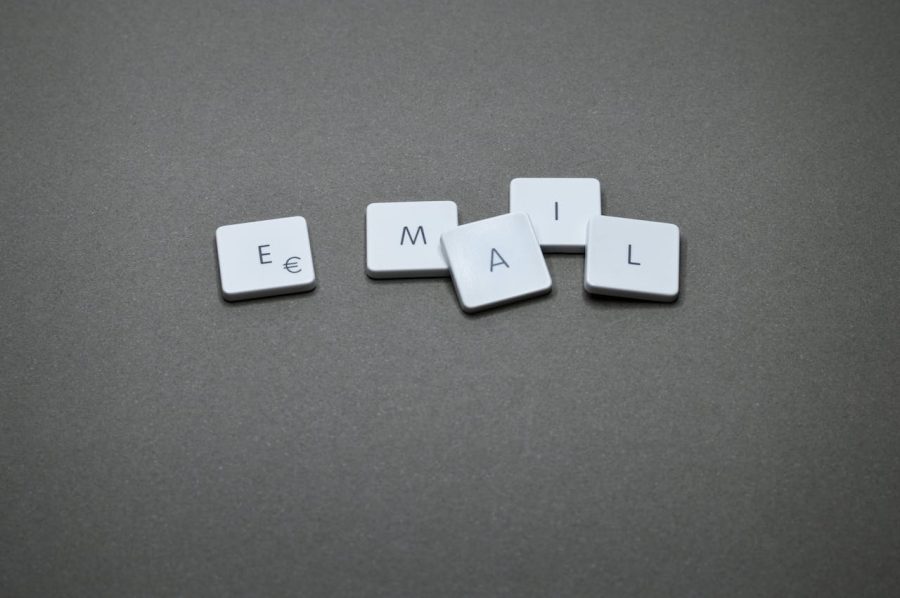Email marketing has been around for quite some time, and has established itself as one of the most profitable digital marketing channels. Brands are forever looking for the best email marketing strategy. The reason behind this is that email marketing can produce an impressive ROI of about £43, or $56 for every $1 spent:
(Source)
However, harnessing its full potential is no easy job without an email marketing strategy. Planning and deciding the steps you need to follow is just as crucial as actually sending your email campaigns.
As we all know, sometimes businesses consider email marketing a necessary evil. But the truth is far from that. In this blog post, you’ll find ten essential steps that you need to follow to build a solid email marketing plan that boosts your marketing strategy as a whole.
So, let’s see what those are.
1. Set Your Goals
Whether we’re talking about email marketing, digital marketing, or a general marketing strategy encompassing all smaller components, it cannot be planned and designed without specific goals.
(Source)
Clearly define what you wish to accomplish, how you will approach your goal, and what constraints or requirements exist. Make sure that your goals are attainable and realistic. Don’t include goals that are irrelevant to your future plans, either.
Think about why you’re doing this and what you want your audience to know about you. A clear and accurate definition of your team’s goals will play a major role in your overall success.
2. Choose an Email Marketing Platform
Sending emails manually is a thing of the past. Once you’ve set your goals, you need all of the arrows in your quiver – aka the email marketing and marketing automation tools – that will hit the targets for you.
A robust email marketing platform that can help you create your emails, keep your subscribers organized, and automate your email sequences is imperative when discussing an email marketing strategy.
There are plenty of newsletter tools that can help you in that regard, like the following:
- Mailchimp
- Brevo
- Moosend
Each tool has its own pros and cons, as some sport a state-of-the-art email editor, and others get too pricey too fast. One thing is certain, though: Email tools that allow you to generate leads, create laser-targeted messages with segmentation and personalization options, and even affiliate marketing options are among the most sought-after characteristics of various newsletter tools.
Some of the best email marketing and marketing automation platforms carry these features to allow marketers to reach their goals. An email marketing and marketing automation platform, like Moosend, sports:
- A robust, easy-to-use drag-and-drop editor that helps create emails faster
- Automation recipes that can streamline a marketing team’s tasks
- Landing pages and subscription forms that generate leads
- More specific options like custom fields that help in segmenting and creating dynamic content
- Various integrations to be used in tandem with the platform
Generally speaking, an email marketing and marketing automation platform can give maximum results with a fraction of the effort, saving marketers a lot of time, resources, and energy that can be used for more growth.
3. Start Growing Your List
Knowing how to create an email list from scratch is of huge importance if you want to have engaged prospects that can turn into customers and customers that can turn into fans and brand ambassadors.
You can grow your list using a variety of methods. The most common is by creating a newsletter signup form on your website.
(Source)
In the above example by Kate Spade, the user benefits from a 10% discount for subscribing to their newsletter. Of course, a discount is not always the answer.
There are other ways to grow your list and boost lead generation. You can generate leads through social media by integrating your email and your social media profiles and promoting signups through your Facebook, LinkedIn, or X page.
To achieve effective lead generation, create landing pages for your brand that can lead back to your website or WordPress blog. Incentivize your audience and urge users to become part of your list. Remember that, whichever method you use, your new subscriber should see the immediate value of joining your list. Use double opt-in to ensure that your signups will be interested in your brand and content.
Also, don’t forget that it’s all about providing real incentives. Use your copy to make a promise to the user. That promise can be an exclusive offer, actionable tips, etc. It is also very important to have encouraging CTAs. The use of action verbs can be that extra push required.
Don’t forget to spice up your lead generation tools with beautiful images, gifs, and all kinds of stunning visuals.
4. Segment Your List
Segmentation is the process of dividing your mailing list into smaller bits based on distinct criteria to target users better. As mentioned above, this action is possible through an email marketing platform.
You can segment your audience through your newsletter signup forms. You need to add specific fields to collect as much information as possible. Collect information such as name, date of birth, or even profession. These pieces of information will help you determine the groups – or segments – your audience can break into.
The same holds true for your landing page.
The aim is to divide users based on specific criteria like location, age, and preferences and improve your email open rates due to relevancy. For example, you can run specific campaigns optimized with dynamic content for users who live across the globe. That way, you’ll be showing personalized and relevant content and products that are more likely to hit the mark.
In short, a segmented list will yield better results and more efficiency.
5. Design Your Campaign
Designing your email campaigns is no rocket science, but you must keep some things in mind, especially when you are new to email marketing. You can create an email from scratch, but a good email marketing platform will give you some amazing newsletter templates to save time and effort.
When you create your email, consider three things: managing your data correctly, creating your copy based on that data, designing your visuals, and using actionable CTAs.
The inverted pyramid model is an excellent way to follow and structure your emails strategically to guide your readers to take action. In essence, what this model does is ensure readability and cater to users’ short attention span:
(Source)
Generally, your copy should be short and valuable to convince your audience to take action. The example above shows the “Shop Now” CTA and a “See which Pops are on the 5 for £40 offer”. Both phrasings are short and centered around the verb that provides information on the action a user has to take next.
As for your visuals, high-quality images are necessary to give a great first impression. Use images of your products or relevant pictures to convey the message. Avoid using images for the sake of it.
And be mindful that your CTAs are the conversion points of your emails. Use actionable words to attract attention and lead them to click. Also, colors are of paramount importance, as well as the overall color palette you’re going for. It must always be in line with your brand’s image.
For instance, a red CTA with a white copy might sound like a good idea when holding a sales offer, but how good is it if your color palette is nothing like it?
According to Forbes, “86% of consumers prefer an authentic brand image and honest personality”. So, don’t forget to incorporate your branding into your emails to make them memorable and connect them to your brand.
6. Craft Subject Lines and Preheader Text
In a full inbox, your subject line – and, secondly, your preview text – is the first thing your email audience notices when they check their inbox. And as we all know, first impressions always matter.
To make an excellent first impression, you need a high-performing subject line that will give you the best open rate.
Make your subject lines short and on-point with actionable verbs that highlight the value your audience will get by opening the email.
(Source)
47% is half your recipient’s list – or almost. Missing out on this conversion opportunity is like leaving money on the table.
Another winning strategy that can get a user’s attention and give your email marketing campaign a playful attitude is to use emojis in your subject line.
Also, remember to personalize your email subject line and go beyond the “Hi, [First Name]” format. This may be one of the classics, but it’s been overused. Nowadays, users tend to go for more complex personalization options. But more on that in a second.
Lastly, your preheader text should be optimized to give subscribers exact information to get them to act. Add relevant information to boost your value proposition in your subject line. Pay attention to your preheader length, as some email providers will not show your preheader text in its entirety.
7. Personalize
A simple “Hi there” isn’t going to get your subscribers’ attention, and it’s a clear nod to the email blasts of the past that won’t cut it anymore. At this point in time, you need to send targeted messages that are tailor-made to meet your subscriber’s needs.
To do that, you need to personalize every element of your email marketing message. From subject line to content, everything will contribute to better results.
Savvy marketers use dynamic content to display specific content to specific individuals. You can create sections that will only appear to a subscriber who fulfills some set criteria and has used or would be interested in specific keywords.
For example, if you have a hotel business and want to promote your bookings or give a special offer in a specific country, go ahead and use dynamic content. Create a block of content that will be shown only to recipients who are located or are about to travel to that specific destination and watch your metrics improve.
Personalization is no longer optional as people expect you to show them the targeted messages they need at the exact time they need it.
8. Automate
Marketing automation is all about automating repetitive tasks and targeting your audience with the right message at the right time, saving time and effort. To do so, you can invest in an email automation platform and use automated triggers that make your marketing message seem like a natural continuation of a user’s action on your website.
eCommerce stores benefit from it the most, as they can automate their welcome emails and cart abandonment series to be sent when a subscriber takes action on their website.
For example, you can automate a cart abandonment email to be sent an hour after cart abandonment occurs. Target your abandoner with an irresistible offer to make the sale happen.
Using automation is essential to restore your lost revenue. Here’s why:
(Source)
Seemingly lost revenue isn’t lost revenue at its core. You can always make up for abandoned carts with a targeted, tailor-made email sequence by using email automation.
Just create a sequence, use the right trigger, and you should be able to target your audience in no time.
9. Measure Performance
Every email marketing platform offers analytics and reporting to track your campaigns. It just takes a little time to understand the metrics you need to monitor and those you should consider vanity metrics.
The core metrics to monitor are your open rates, click-through rates (CTR), bounce rates, and conversion rates. Vanity metrics could be the subscriber count or the sent volume. However, remember that this differs according to business, audience, and goals.
Keep track of your metrics with your analytics tools. The more advanced your analytics are, the more data you will have at your disposal. For instance, you can monitor opens by location to better understand how specific subscribers interact with your emails.
Tracking your growth and how you achieve it through data can help you create a better content marketing strategy and issue spot-on content subscribers will love.
Not to mention how much it can help with another essential methodology: A/B testing.
10. A/B Test
A/B testing is essential for every successful email marketing strategy as trends and customer preferences change all the time, especially in times of crisis like the COVID era that reshaped the marketing field as we know it.
You can optimize your campaigns by running effective A/B tests. An A/B testing campaign occurs when marketers create two versions of the same action – in our case, the email campaign – that differ in one key component. Your next step in A/B testing should be to send one variation of your campaign to a segment of your subscribers and another variation to a different segment of your subscribers, measuring the performance of each campaign.
Pay attention to the metrics that correspond with what you’re testing for. Check your open rates if you’re testing subject lines, your Click-Through Rate for images or copy, and conversion rates if you’re testing CTAs.
Remember that everything can be A/B tested, from content to subject lines and CTAs, but you don’t always have to do it. If your audience is too small, too homogenous, or your email campaign is a generic one to begin with, it’s best to save the effort and use A/B testing when it really matters.
The Takeaway
Email marketing is a cost-effective way to engage your audience, build bonds with users, and lead them to conversion.
To get from zero to hero, you need a solid strategy that will work every single time. If you want to succeed, make sure to get the right tools for the job. Your email marketing platform should be your ally in this battle, not the end-all-be-all.
A solid email marketing strategy is step one, and picking and choosing the right platform and methodology comes right after that.
Moreover, segmentation and personalization will help you deliver more targeted content and engage your audience more effectively.
And last but not least, don’t forget to measure your results and test your emails whenever possible. Consumer habits and preferences are ever-changing. So, don’t forget to optimize your strategy over time, using these ten methods as a blueprint.
Featured Image Credit: Miguel Á. Padriñán; Pexels; Thank you!























